Developing an EFDC and Numerical Source-Apportionment Model for Nitrogen and Phosphorus Contribution Analysis in a Lake Basin
Abstract
1. Introduction
2. Materials and Methods
2.1. Study Area
2.2. Model Description
2.2.1. Hydrodynamic Water-Quality Model in EFDC
2.2.2. Numerical Source-Apportionment Model
2.2.3. Solution of the Source-Appointment Model
2.3. Model Configuration
3. Model Calibration and Validation
4. Results and Discussion
5. Conclusions
Author Contributions
Funding
Conflicts of Interest
References
- Mcrae, C.; Love, G.D.; Murray, I.P.; Snape, C.E.; Fallick, A.E. Potential of gas chromatography isotope ratio mass spectrometry to source polycyclic aromatic hydrocarbon emissions. Anal. Commun. 1996, 33, 331–333. [Google Scholar] [CrossRef]
- Hu, C.; Wang, T.; Su, D.; Tang, D.Y.; Liu, L.L.; Zhang, L.H. Methods for source apportionment of contaminates and their application in aquatic environment. Water Resour. Prot. 2010, 1, 57–62. [Google Scholar]
- Zhang, H.C.; Dong, J.; Wang, Z.F. The latest progress on source apportionment of water pollution source. China Environ. Monit. 2013, 1, 18–22. [Google Scholar]
- Watson, J.G.; Chow, J.C. Source characterization of major emission sources in the Imperial and Mexicali Valleys along the US/Mexico border. Sci. Total Environ. 2001, 276, 33–47. [Google Scholar] [CrossRef]
- Kumru, M.N.; Bakaç, M. R-mode factor analysis applied to the distribution of elements in soils from the Aydın basin, Turkey. J. Geochem. Explor. 2003, 77, 81–91. [Google Scholar] [CrossRef]
- Zhao, J.; Xu, Z.X.; Liu, X.C.; Liu, C.J. Source apportionment in the Liao River Basin. China Environ. Sci. 2013, 33, 838–842. [Google Scholar]
- Eugene, K.; Hopke, P.K.; Edgerton, E.S. Source identification of Atlanta Aerosol by positive matrix factorization. J. Air Waste Manag. Assoc. 2003, 53, 731–739. [Google Scholar]
- Zhang, Y.; Guo, F.; Meng, W.; Wang, X.Q. Water quality assessment and source identification of Daliao River Basin using multivariate statistical methods. Environ. Monit. Assess. 2009, 152, 105–121. [Google Scholar] [CrossRef] [PubMed]
- Qu, M.K.; Li, W.D.; Zhang, C.R.; Huang, B.; Hu, W.Y. Source apportionment of soil heavy metal Cd based on the combination of receptor model and geostatistics. China Environ. Sci. 2013, 33, 854–860. [Google Scholar]
- Kelley, D.W.; Nater, E.A. Source apportionment of lake bed sediments to watersheds in an Upper Mississippi basin using a chemical mass balance method. Catena 2000, 41, 277–292. [Google Scholar] [CrossRef]
- Wang, Q.; Wu, X.; Zhao, B.; Qin, J.; Peng, T. Combined multivariate statistical techniques, Water Pollution Index (WPI) and Daniel Trend Test methods to evaluate temporal and spatial variations and trends of water quality at Shanchong River in the northwest basin of Lake Fuxian, China. PLoS ONE 2015, 10, e0118590. [Google Scholar] [CrossRef] [PubMed]
- Gu, Q.; Wang, K.; Li, J.D.; Ma, L.G.; Deng, J.S.; Zheng, K.F.; Zhang, X.B.; Sheng, L. Spatio-temporal trends and identification of correlated variables with water quality for drinking-water reservoirs. Int. J. Environ. Res. Public Health 2015, 12, 13179–13194. [Google Scholar] [CrossRef] [PubMed]
- Chen, P.; Li, L.; Zhang, H. Spatio-temporal variations and source apportionment of water pollution in Danjiangkou Reservoir Basin, Central China. Water 2015, 7, 2591–2611. [Google Scholar] [CrossRef]
- Pekey, H.; Karakaş, D.; Bakoglu, M. Source apportionment of trace metals in surface waters of a polluted stream using multivariate statistical analyses. Mar. Pollut. Bull. 2004, 49, 809–818. [Google Scholar] [CrossRef] [PubMed]
- Singh, K.P.; Malik, A.; Sinha, S. Water quality assessment and apportionment of pollution sources of Gomti river (India) using multivariate statistical techniques-a case study. Anal. Chim. Acta 2005, 538, 355–374. [Google Scholar] [CrossRef]
- Bzdusek, P.A.; Christensen, E.R.; Li, A.; Zou, Q.M. Source apportionment of sediment PAHs in Lake Calumet, Chicago: Application of factor analysis with nonnegative constraints. Environ. Sci. Technol. 2004, 38, 97–103. [Google Scholar] [CrossRef] [PubMed]
- Wang, Z.F.; Zhang, S.Y.; Zhang, H.C.; Zhao, H.; Ji, Y.Q. Source apportionment technology of river pollution source by water quality model coupling with CMB model. Environ. Eng. 2015, 2, 135–139. [Google Scholar]
- Li, A.; Jang, J.K.; Scheff, P.A. Application of EPA CMB8.2 model for source apportionment of sediment PAHs in Lake Calumet, Chicago. Environ. Sci. Technol. 2003, 37, 2958–2965. [Google Scholar] [CrossRef] [PubMed]
- Cooper, R.J.; Krueger, T.; Hiscock, K.M.; Rawlins, B.G. Sensitivity of fluvial sediment source apportionment to mixing model assumptions: A Bayesian model comparison. Water Resour. Res. 2014, 50, 9031–9047. [Google Scholar] [CrossRef] [PubMed]
- Henry, R.C. Duality in multivariate receptor models. Chemometr. Intell. Lab. 2005, 77, 59–63. [Google Scholar] [CrossRef]
- Chapra, S.C.; Asce, M. Engineering water quality models and TMDLs. J. Water Resour. Plan. Manag. 2003, 129, 839–852. [Google Scholar] [CrossRef]
- Luo, F.; Li, R.J. 3D water environment simulation for North Jiangsu offshore sea based on EFDC. J. Water Resour. Prot. 2009, 1, 41–47. [Google Scholar] [CrossRef]
- Wang, Y.; Jiang, Y.; Liao, W.; Gao, P.; Huang, X.; Wang, H.; Song, X.; Lei, X. 3-D hydro-environmental simulation of Miyun Reservoir, Beijing. J. Hydro-Environ. Res. 2014, 8, 383–395. [Google Scholar] [CrossRef]
- Wu, G.; Xu, Z. Prediction of algal blooming using EFDC model: Case study in the Daoxiang Lake. Ecol. Model. 2011, 222, 1245–1252. [Google Scholar] [CrossRef]
- Hamrick, J.M. A Three-Dimensional Environmental Fluid Dynamics Computer Code: Theoretical and Computational Aspects; Special Report No. 317 in Applied Marine Science and Ocean Engineering; Virginia Institute of Marine Science: Gloucester Point, VA, USA, 1992; p. 64. [Google Scholar]
- Hamrick, J.M. User’s Manual for the Environmental Fluid Dynamics Computer Code; Special Report No. 331 in Applied Marine Science and Ocean Engineering; Virginia Institute of Marine Science: Gloucester Point, VA, USA, 1996. [Google Scholar]
- Jeong, S.; Yeon, K.; Hur, Y.; Oh, K. Salinity intrusion characteristics analysis using EFDC model in the downstream of Geum River. J. Environ. Sci. 2010, 22, 934–939. [Google Scholar] [CrossRef]
- Ji, Z.G.; Morton, M.R.; Hamrick, J.M. Wetting and drying simulation of estuarine processes. Estuar. Coast. Shelf Sci. 2001, 53, 683–700. [Google Scholar] [CrossRef]
- Jia, H.F.; Liang, S.D.; Zhang, Y.S. Assessing the impact on groundwater safety of inter-basin water transfer using a coupled modeling approach. Front. Environ. Sci. Eng. 2015, 9, 84–95. [Google Scholar] [CrossRef]
- Park, K.; Jung, H.S.; Kim, H.S.; Ahn, S.M. Three-dimensional hydrodynamic-eutrophication model (HEM-3D): Application to Kwang-Yang Bay, Korea. Mar. Environ. Res. 2005, 60, 171–193. [Google Scholar] [CrossRef] [PubMed]
- Arifin, R.R.; James, S.C.; Pitts, D.D.; Hamlet, A.F.; Sharma, A.; Fernando, H.J. Simulating the thermal behavior in Lake Ontario using EFDC. J. Great Lakes Res. 2016, 42, 511–523. [Google Scholar] [CrossRef]
- James, S.C.; Jones, C.A.; Grace, M.D.; Roberts, J.D. Advances in sediment transport modelling. J. Hydraul. Res. 2010, 48, 754–763. [Google Scholar] [CrossRef]
- Craig, P.M. User’s Manual for EFDC Explorer: A Pre/Post Processor for the Environmental Fluid Dynamics Code; Dynamic Solutions-International, LLC: Knoxville, TN, USA, 2011. [Google Scholar]
- James, S.C.; Boriah, V. Modeling algae growth in an open-channel raceway. J. Comput. Biol. 2010, 17, 895–906. [Google Scholar] [CrossRef] [PubMed]
- James, S.C.; Janardhanam, V.; Hanson, D.T. Simulating pH effects in an algal-growth hydrodynamics model. J. Phycol. 2013, 49, 608–615. [Google Scholar] [CrossRef] [PubMed]
- Du, W.; Li, Y.P.; Hua, L.; Wang, C.; Wang, P.F.; Wang, J.Y.; Wang, Y.; Chen, L.; Buoh, R.B.; Jepkirui, M.; Pan, B.B.; Jiang, Y.; Achaya, K. Water age responses to weather conditions in a hyper-eutrophic channel reservoir in southern China. Water 2016, 8, 372. [Google Scholar] [CrossRef]
- Nitrogen and phosphorus pollution in the western district of Wangyu river and counter-measures, Taihu basin. J. Lake Sci. 2010, 22, 315–320.
- Luo, Y.; Zhao, Y.S.; Yang, K.; Chen, K.X.; Pan, M.; Zhou, X.L. Dianchi Lake watershed impervious surface area dynamics and their impact on lake water quality from 1988 to 2017. Environ. Sci. Pollut. Res. 2018. [Google Scholar] [CrossRef] [PubMed]
- Jia, H.F.; Xu, T.; Liang, S.D.; Zhao, P.; Xu, C.Q. Bayesian framework of parameter sensitivity, uncertainty, and identifiability analysis in complex water quality models. Environ. Modell. Softw. 2018, 104, 13–26. [Google Scholar] [CrossRef]
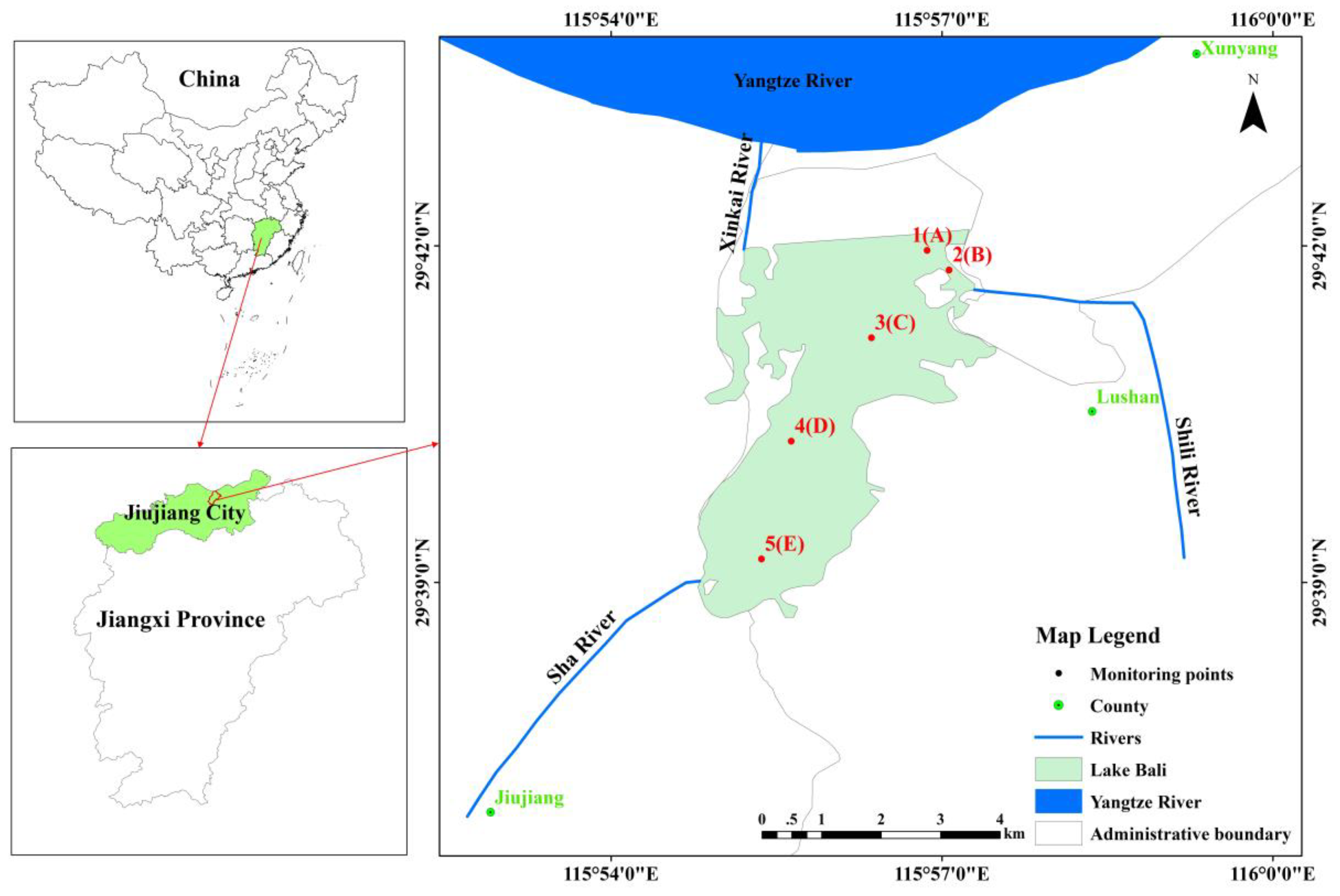
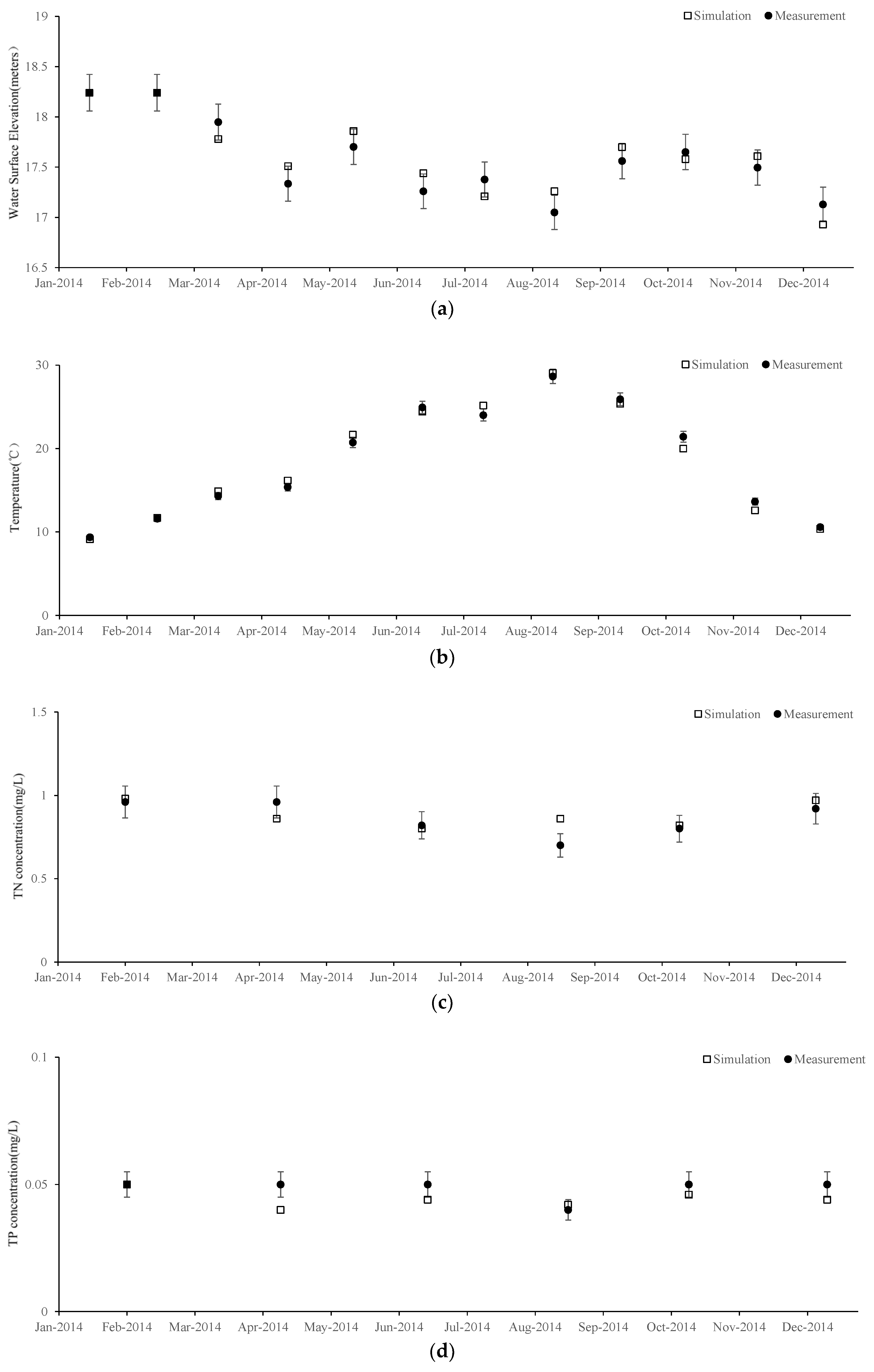
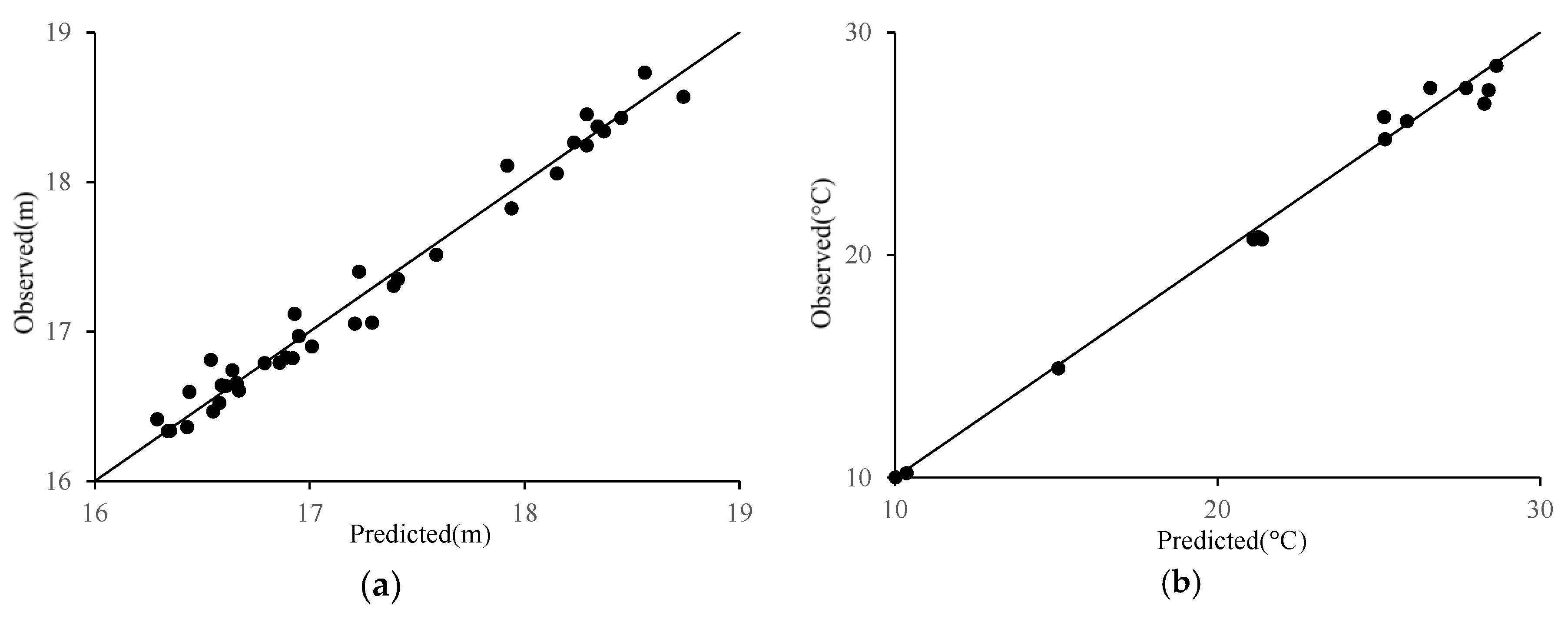


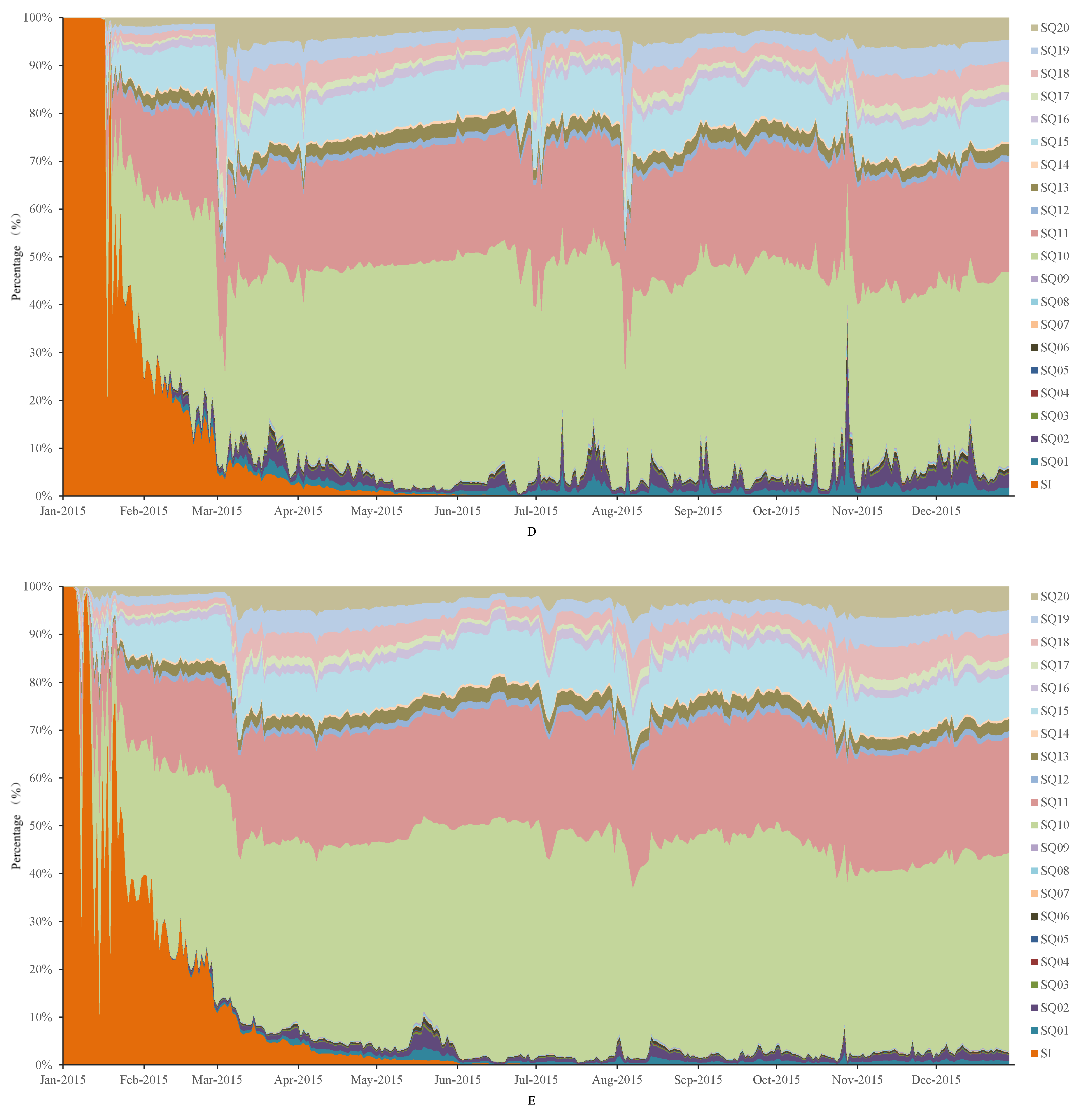
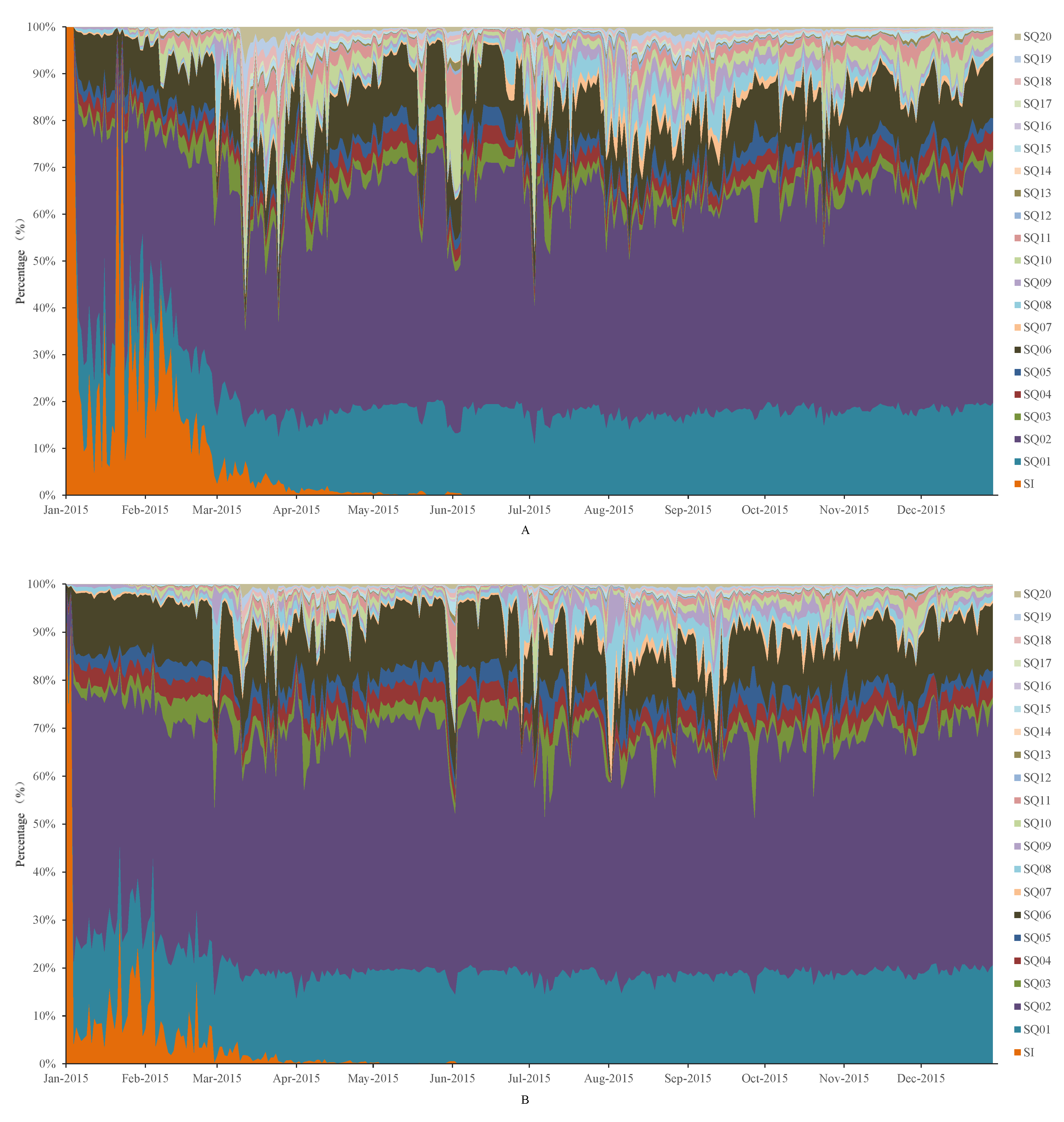
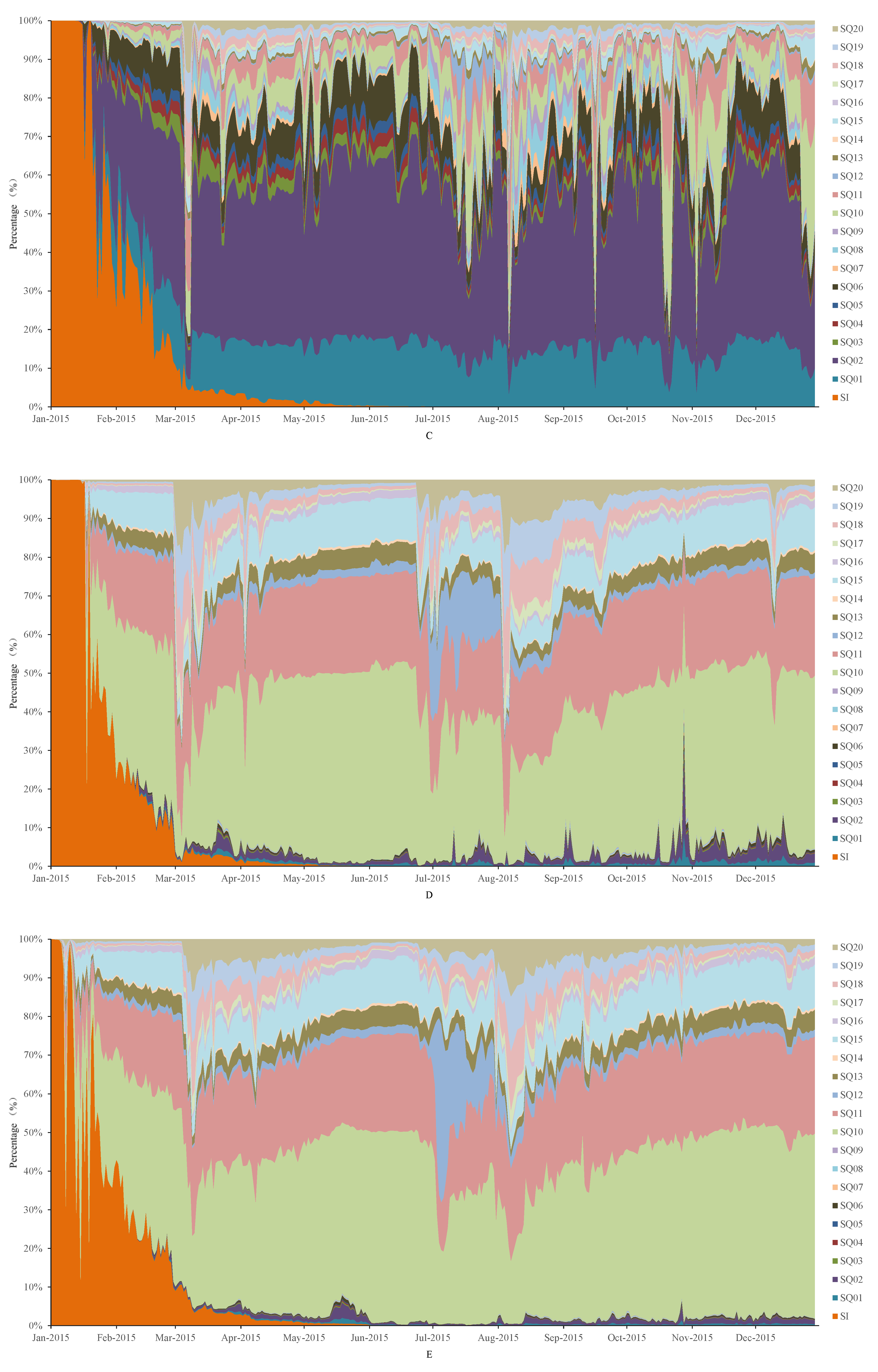
| Generalizability Name in the Model | Type of Pollution Source | Position |
|---|---|---|
| SQ01 | Urban sources with concentrated discharge | Shili River sub-watershed |
| SQ02 | Urban sources with scattered discharge | Shili River sub-watershed |
| SQ03 | Industrial sources | Shili River sub-watershed |
| SQ04 | Large-scale livestock sources | Shili River sub-watershed |
| SQ05 | Rural sources I | Shili River sub-watershed |
| SQ06 | Rural sources II | Shili River sub-watershed |
| SQ07 | Agricultural-fertilization sources I | Shili River sub-watershed |
| SQ08 | Agricultural-fertilization sources II | Shili River sub-watershed |
| SQ09 | Soil background sources | Shili River sub-watershed |
| SQ10 | Urban sources with concentrated discharge | Sha River sub-watershed |
| SQ11 | Urban sources with scattered discharge | Sha River sub-watershed |
| SQ12 | Industrial sources | Sha River sub-watershed |
| SQ13 | Large-scale livestock sources | Sha River sub-watershed |
| SQ14 | Rural sources I | Sha River sub-watershed |
| SQ15 | Rural sources II | Sha River sub-watershed |
| SQ16 | Rural sources III | Sha River sub-watershed |
| SQ17 | Agricultural-fertilization sources I | Sha River sub-watershed |
| SQ18 | Agricultural-fertilization sources II | Sha River sub-watershed |
| SQ19 | Agricultural-fertilization sources III | Sha River sub-watershed |
| SQ20 | Soil background sources | Sha River sub-watershed |
| Parameter | Definition | Value |
|---|---|---|
| AVO | Background, Constant or Molecular Kinematic Viscosity (m2/s) | 1 × 10−6 |
| ABO | Background, Constant or Molecular Diffusivity (m2/s) | 1.4 × 10−9 |
| AVMN | Minimum Kinematic Eddy Viscosity (m2/s) | 1 × 10−6 |
| ABMN | Minimum Eddy Diffusivity (m2/s) | 1.4 × 10−8 |
| KD | First-Order Degradation Rate (/d) | 0.03 (TN), 0.02 (TP) |
| KS | Sedimentation Rate (m/d) | 0.02 (TN), 0.08 (TP) |
© 2018 by the authors. Licensee MDPI, Basel, Switzerland. This article is an open access article distributed under the terms and conditions of the Creative Commons Attribution (CC BY) license (http://creativecommons.org/licenses/by/4.0/).
Share and Cite
Bai, H.; Chen, Y.; Wang, D.; Zou, R.; Zhang, H.; Ye, R.; Ma, W.; Sun, Y. Developing an EFDC and Numerical Source-Apportionment Model for Nitrogen and Phosphorus Contribution Analysis in a Lake Basin. Water 2018, 10, 1315. https://doi.org/10.3390/w10101315
Bai H, Chen Y, Wang D, Zou R, Zhang H, Ye R, Ma W, Sun Y. Developing an EFDC and Numerical Source-Apportionment Model for Nitrogen and Phosphorus Contribution Analysis in a Lake Basin. Water. 2018; 10(10):1315. https://doi.org/10.3390/w10101315
Chicago/Turabian StyleBai, Hui, Yan Chen, Dong Wang, Rui Zou, Huanzhen Zhang, Rui Ye, Wenjing Ma, and Yunhai Sun. 2018. "Developing an EFDC and Numerical Source-Apportionment Model for Nitrogen and Phosphorus Contribution Analysis in a Lake Basin" Water 10, no. 10: 1315. https://doi.org/10.3390/w10101315
APA StyleBai, H., Chen, Y., Wang, D., Zou, R., Zhang, H., Ye, R., Ma, W., & Sun, Y. (2018). Developing an EFDC and Numerical Source-Apportionment Model for Nitrogen and Phosphorus Contribution Analysis in a Lake Basin. Water, 10(10), 1315. https://doi.org/10.3390/w10101315




